
На сайте используются cookie файлы
The site uses cookie files
Данный сайт имеет возрастное ограничение!
This site has age restrictions!
Я подтверждаю, что мне, увы, уже давно исполнилось 18 лет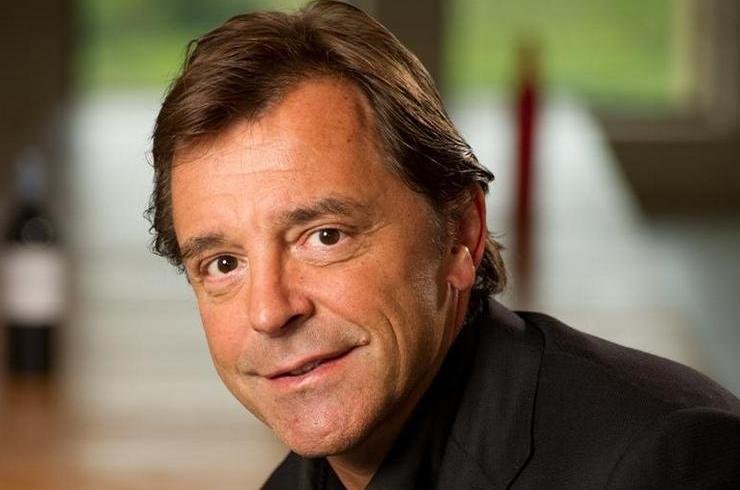
Our exclusive interview with Silvio Denz – the owner of The House of Lalique and several French and Spanish stellar wineries.
D+: Last year The House of Lalique celebrated 130th anniversary. What events or releases were held in honor to this special occasion?
Silvio Denz: For the 130th anniversary of Lalique that we celebrated in 2018, we have created several pieces in limited edition of 130 pieces on the theme of the swallow, iconic motif of the brand: the vase ‘‘Hirondelles’’ stamped with gold, the fragrance Mon Premier Cristal Hirondelles and a scented candle in sapphire blue crystal and enamelled platinum. I have always considered Lalique to be a timeless lifestyle brand, and since I bought the company in 2008, I wanted to grow the ‘‘art of living’’ positioning by marrying the French style of living well, savoir-vivre, with the French style of doing things well, savoir-faire, through six core pillars: decorative items, fragrances, jewels, interior design, art and now hospitality, which has been a new business area for Lalique since 2015. We highlight Lalique’s values, these being our know-how, our quest of excellence and also the rich artistic heritage that we inherited from Rene Lalique and that inspires us in our contemporary collections.
I have always considered Lalique to be a timeless lifestyle brand, and since I bought the company in 2008, I wanted to grow the ‘‘art of living’’ positioning by marrying the French style of living well, savoir-vivre, with the French style of doing things well, savoir-faire, through six core pillars: decorative items, fragrances, jewels, interior design, art and now hospitality, which has been a new business area for Lalique since 2015.

D+: Speaking of Lalique, of course, we cannot overlook the 2013 vintage of your Chateau Lafaurie-Peyraguey, which had a special bottle with one of Rene Lalique’s exquisite engravings – Femme et Raisins. Is it true that this is a fragment of the famous panel ’’Figures and Vines’’ in a dining car of the Cote d’Azur – Pullman Express train? Are you planning anything else in a similar vein for releases created in your chateau?
S.D.: Yes indeed, Rene created in 1929 the ‘‘Femme et Raisins’’ (the woman and the grapes) glass panels for the dining car of the legendary Cote d’Azur Pullmann Express train, a creation inspired by themes dear to the heart of this Art Nouveau master. And we decided to feature this pattern on the Chateau Lafaurie-Peyraguey bottle since the 2013 vintage. Also unique crystal pieces were created especially for Chateau Lafaurie-Peyraguey, combining the worlds of wine and crystal: vine leaf, Semillon grape, cork, plug, case of wine, a spectacular jeroboam and the delicate drops of gold, whose colour recalls molten crystal and sweet wine. And last but not least, a unique Lalique barrel, in glass and crystal, which has leather straps and is engraved with the famous ‘‘Femme et Raisins’’ motif created by Rene Lalique in 1928. The finesse of crystal pays homage to the golden wine.
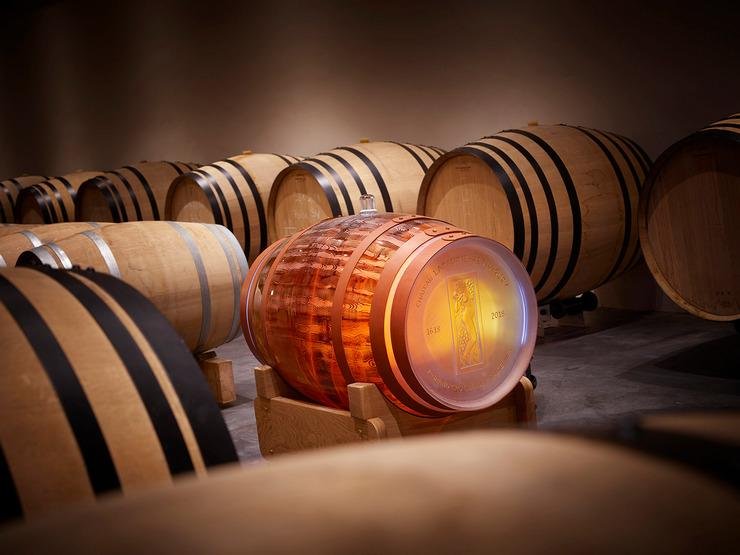
D+: Sommeliers recommend serving Sauterne Chateau Lafaurie-Peyraguey 2013 with an appropriate accompaniment: scallops, lobsters, high quality cheeses. What are some of your favorite food pairings for this wine?
S.D.: 2013 was an exceptional vintage for Sauternes and Chateau Lafaurie-Peyraguey 2013 is no exception. It is an explosion of exotic fruits with a hint of caramel. I think this wine is perfect to enjoy with a dish called “Emotion of Lafaurie” and created by Jerome Schilling, chef of the Restaurant LALIQUE at Chateau LafauriePeyraguey. It consists of qince, Salers cheese, coppercoloured angelica jus and red honeycomb – it does great justice to the depth and elegance of this vintage. Two things you will only find in a Premier Grand Cru Classe.
And last but not least, a unique Lalique barrel, in glass and crystal, which has leather straps and is engraved with the famous ‘‘Femme et Raisins’’ motif created by Rene Lalique in 1928. The finesse of crystal pays homage to the golden wine.
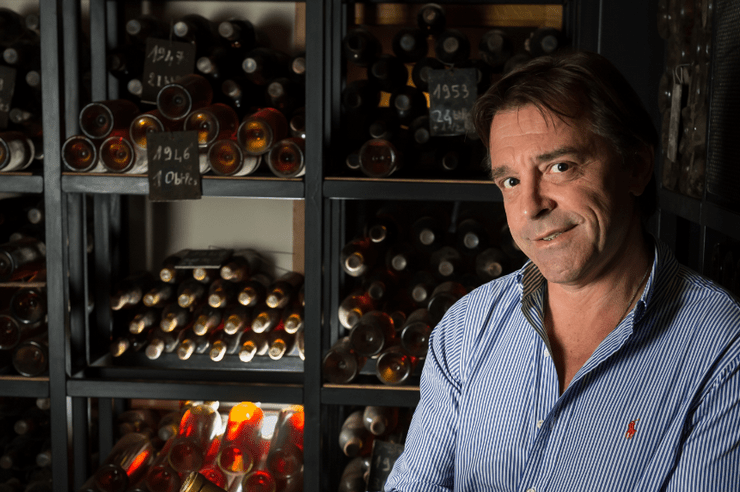
D+: In 2011, in Wingen-sur-Moder, at a villa that once belonged to Rene Lalique, the Museum Lalique was opened. Among the many exhibited masterpieces there are bottles created by Rene Lalique, whose father, as we know, was a wine merchant dealing such brands as Macallan, Hardy, Patron. Do you have any plans to continue the production of premium bottles for other alcohol brands? If so, can you tell us more about the design and brands?
S.D.: Each year we launch unique or limited edition bottles, in collaboration with high end spirits brands. For over 15 years, Lalique has designed and produced spectacular decanters for The Macallan famous whisky, achieving several record prices at auctions in Hong Kong and New York. Recently, we created a collection of six decanters for Niepoort Port wine house. The “Niepoort in Lalique 1863” decanter, the first one of the series, was sold at auction in Hong Kong in November 2018 at the price of HK $992,000 (approximately EUR 111,000), which achieved a world record of the most expensive Port wine sold at auction. Lalique will indeed continue to develop partnerships with high end brands with a view to create unusual bottles, thus benefitting from the expertise and savoir-faire of the two partners working together.
D+: In 2015 Lalique S.A. announced an expansion of its activity for a hotel food sector and hospitality sector. It can be assumed that the company had embodied its ideals at the Villa in Wingen-sur-Moder, where a luxury hotel with a gastronomic restaurant is run under the auspices of the chef Jean-Georges Klein. Could you please tell us more about this project?
S.D.: With the Villa built by Rene Lalique in 1920, I wanted to take the home of Rene Lalique to honour him and his work while at the same time, create a living Showroom for the Lalique brand today, highlighting the interior design, architecture, decorative objects and art categories. Therefore we renovated the Villa which has reinvented itself and taken on a new lease of life since its opening in September 2015. It has become the sumptuous setting for a five-star hotel with six suites and a gourmet restaurant, which was awarded two stars by the Guide Michelin three months only after its opening, thanks to the immense talent and involvement of Chef Jean-Georges Klein and his team. And the same year Villa Rene Lalique became a member of the prestigious Relais & Chateaux collection.

D+: The villa storage has a collection of 12,000 bottles. Could you name five of them which, in your opinion, are the most valuable, and what is their price today? And can you suggest to those who are going to have dinner at the restaurant some of the most interesting samples from its wine list (perhaps in pairing with the most outstanding Chef’s dish)?
S.D.: Here are five of the ‘‘treasures’’ of the restaurant menu: – Sauternes Chateau d’Yquem 1865 at 28,000 Euros – Sauternes Chateau Lafaurie Peyraguey 1920 at 1,800 Euros – Alsace Gewurztraminer Clos Zisser Klipfel 1943 at 900 Euros – Romanee Conti 1989 at 10,000 Euros – Napa Valley Screaming Eagle 1992 at 10,000 Euros. And here are three wines, among others, that are interesting in food and wine pairing: Sancerre Grand Chemarin Vincent Pinard 2014 a EUR 120 perfectly goes with the following dish: char slowly candied, almonds, vinaigrette of buds of spruce. Saint Emilion GC Chateau Peby Faugeres 2000 with the roe deer of our regions, sun artichokes cheesecake, pear, reduced jus with an infusion of fermented lemon. Alsace Grand Cru Brand Riesling Josmeyer 2014 with the gold caviar, seriola tartare with creamy celeriac, buckwheat blinis.

D+: Story goes that your passion for wine takes roots from the wine companies that you owned. Which winery you bought first and under what circumstances? Why did you decide then that it was the very hour and the very object? What is it`s fate?
S.D.: In the mid-1990s, I diversified my activities and became a co-founder of ‘Les Grands Vins Wermuth’, a wine merchant in Zurich. Following a demerger, one part of this company became ‘Denz Weine’. Wanting to get involved in wine production, in 1998 I formed a partnership to acquire ‘Clos d’Agon’. Responsibility for running this Costa Brava vineyard was entrusted to winemaker Peter Sisseck.
In 2005, I invested in Bordeaux by acquiring the estates Chateau Faugeres, Chateau Peby Faugeres and Chateau Cap de Faugeres. My passion then took me to Italy. In partnership with Fabio Chiarelotto, since 2007 I have been making four wines as powerful as they are precise at Montepeloso estate in the Tuscan valleys. In 2010, Chateau Rocheyron in Saint-Emilion – purchased with Peter Sisseck – joined Vignobles Silvio Denz. Four years later, Chateau Lafaurie-Peyraguey – one of the oldest estates in Sauternes – rounded off this collection of vineyards as part of the company Art & Terroir.

D+: Which enologist do you work with?
S.D.: I worked with the support of Michel Rolland, who has been the estate’s consultant oenologist since 1992, allow it to strive for perfection vintage after vintage.

We highlight Lalique’s values, these being our know-how, our quest of excellence and also the rich artistic heritage that we inherited from Rene Lalique and that inspires us in our contemporary collections.
D+: In March 2005, you purchased simultaneously three wineries in Bordeaux: Chateau Faugeres, Chateau Peby Faugeres (AOC Saint-Emilion Grand Cru), and Chateau Cap de Faugeres (AOC Cotes de Castillon). Did you foresee then that in June 2015 Robert Parker would give a hundred points to the 2005 Peby Faugeres vintage?! If it’s not a secret, how did you select these chateaux for the purchase then and how did you work on creating such a wine?
S.D.: The red jewel in the Vignobles Silvio Denz crown, Peby Faugeres was created in 1998 in tribute to the estate’s former owner Pierre-Bernard Guisez, whose nickname it has adopted. Made up of Faugeres best Merlot plots, this vineyard occupies a single piece of land on the ancient soils of the Saint-Emilion limestone-clay plateau and was soon recognised as a wine in its own right. Quickly rising to become one of the greats, its 2000 vintage (christened ‘Legend of the Future’) was named one of the top 24 wines in Bordeaux by Robert Parker, who then awarded it the perfect score of 100/100 in 2005 in his magazine ‘Wine Advocate’. Born of a unique terroir, Peby Faugeres is also the expression of an ongoing quest for perfection both at the vines and in the winery, where it benefits from the expertise of oenologist Michel Rolland. In addition to the demanding standards shared with the others Vignobles Silvio Denz estates, this Saint-Emilion Grand Cru Classe also nurtures rarity: every year, the harvest undergoes a rigorous selection which only permits small-scale production of 18 hectolitres per hectare.
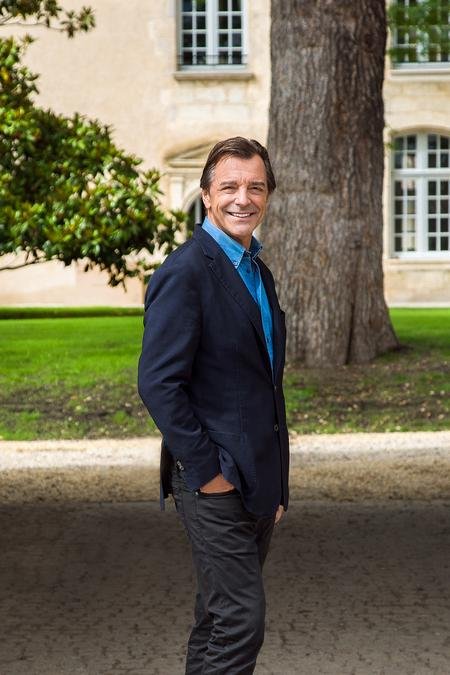
D+: People say that it is an exemplary wine storehouse where all modern requirements were made? How is this cellar different from others?
S.D.: I put my enthusiasm and taste for excellence at work in the estates I acquired. Nothing is left to chance in the running of these estates, which are committed to the ongoing pursuit of perfection using the most natural possible practices in accordance with ECOPASS ISO 14001 certification. Every detail matters and contributes to the wines’ unique expression. Reading a terroir, expert advice, watchful care, modernising equipment, combining traditional practices with more innovative technologies – every effort is made to enable the plots of land to express their abundant potential to the full. I try to blend these talents and combine my passions to bring these developments to fruition. The art of winemaking, architecture, traditional expertise and cutting-edge infrastructure are all put to use to achieve the best possible interpretation of these vineyards. Tasting notes and scores have demonstrated the quality of the wines from one vintage to the next. In 2012, seven years after they were acquired, Chateau Peby Faugeres and Chateau Faugeres became SaintEmilion Grands Crus Classes.
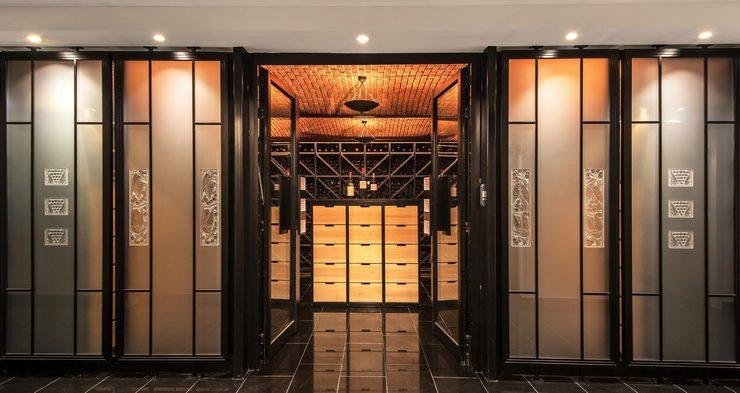
D+: Could you please tell us about the collaboration with the architect Mario Botta to create a wine cellar in Chateau Faugeres. The say it is an exemplary storehouse for wine where all modern requirements are met. How is this cellar different from others?
S.D.: As well as being a remarkable work of architecture, the winery is also a technological tool designed for cutting-edge winemaking. As a true temple of wine, its excellent facilities (in particular its gravity-fed vat house) paired with the support of Michel Rolland, the estate’s consultant oenologist, allow it to strive for perfection vintage after vintage.